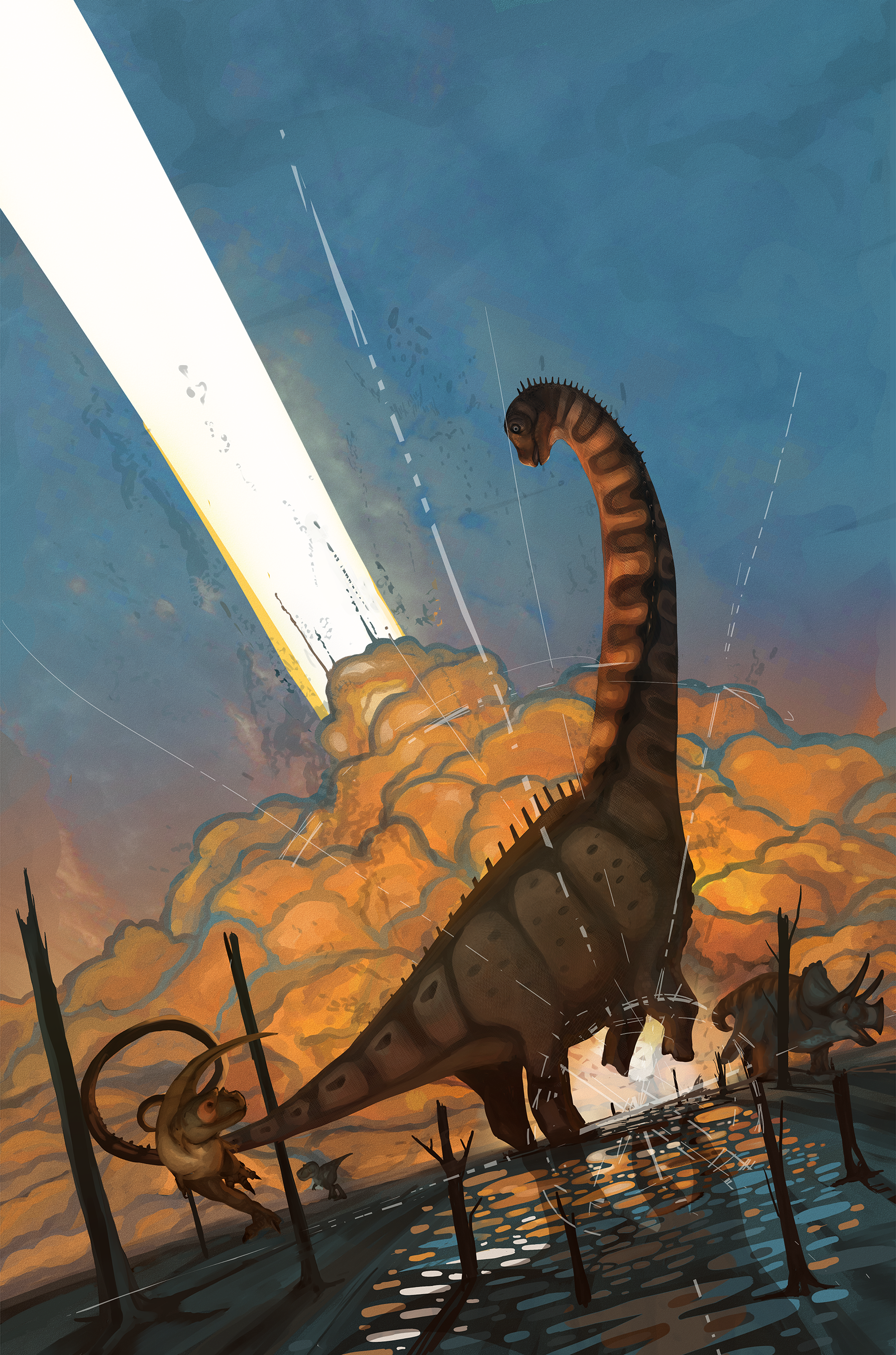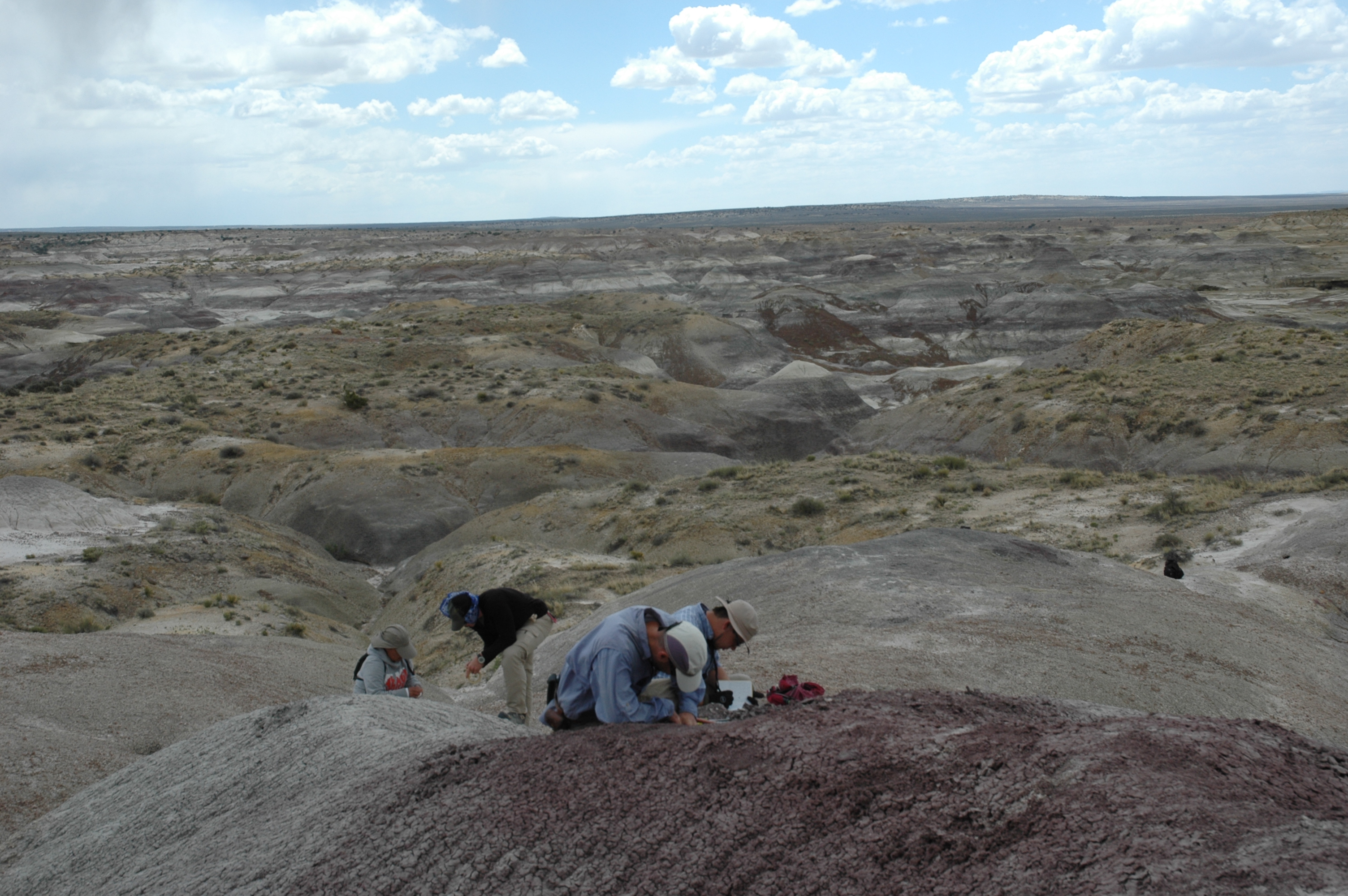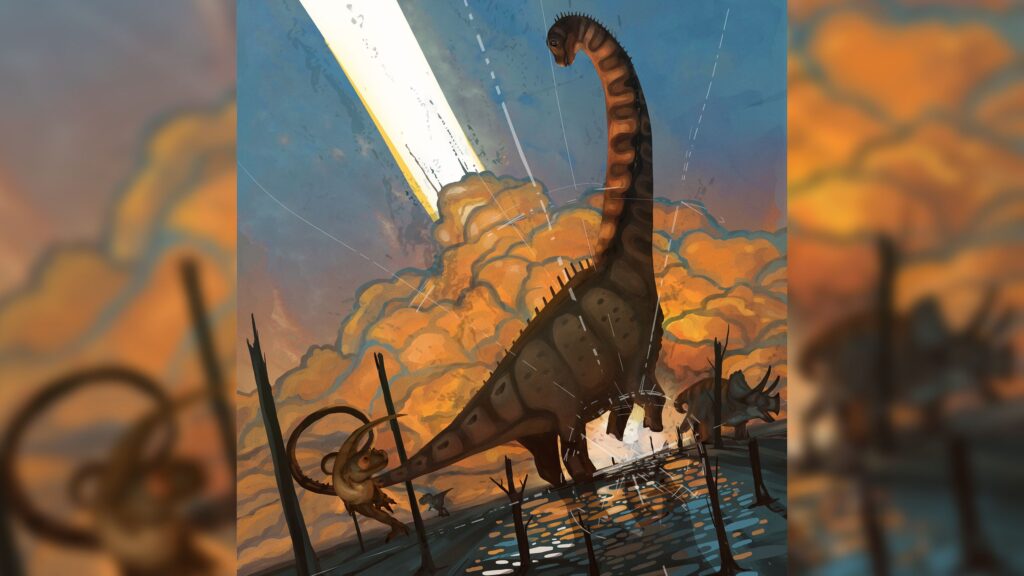
Some of the last dinosaurs in the world were healthy and thriving right up until the day they were annihilated by asteroid Armageddon, a new study on fossils from New Mexico finds.
Scientists have debated for decades whether non-avian dinosaurs were in decline before a massive asteroid struck Mexico’s Yucatán Peninsula at the end of the Cretaceous period (145 million to 66 million years ago). The new study, published Thursday (Oct. 23) in the journal Science, supports previous evidence that the dinosaurs were struck down in their prime and might have still roamed Earth if it weren’t for that pesky asteroid.
Researchers dated rocks from the Naashoibito Member fossil site in New Mexico, which preserved a rich Cretaceous ecosystem home to a variety of dinosaurs, including the 70-foot-long (21 meters) long-necked sauropod known as Alamosaurus, as well as meat-eating tyrannosaurs, horned dinosaurs and duck-billed dinosaurs. The dating revealed that this ecosystem existed just before the Chicxulub asteroid strike, suggesting that New Mexico’s last dinosaurs were doing well before the giant space rock brought death from the sky.
“At least before the mass extinction event, they appear to be thriving,” study lead author Andrew Flynn, an assistant professor in the Department of Geological Sciences at New Mexico State University, told Live Science in an email. “There is a diverse dinosaur fauna in the Nasshoibito Member in New Mexico so the dinosaur population appears to be healthy.”
The asteroid triggered a mass extinction event in which around 75% of living species went extinct, including all dinosaurs, except for birds. Previously, some research has suggested that dinosaur diversity declined as part of a restructuring in the Maastrichtian age (72.1 million to 66 million years ago) of the Cretaceous, with environmental factors such as climate change making the dinosaurs more vulnerable to catastrophe. However, other researchers have argued that the asteroid interrupted an age of prosperity for the dinosaurs.
Much of what scientists know about the Cretaceous-Paleogene (K-Pg) boundary — the rocks that mark the end of the Cretaceous period — has come from formations such as Hell Creek and Fort Union in the northern Great Plains U.S., which means there’s a lot of uncertainty surrounding what was happening elsewhere.
Paleontologists knew that the Naashoibito Member featured New Mexico’s last known non-avian dinosaurs, but the precise age of these fossils has been up for debate. In the new study, researchers sought to resolve this uncertainty by combining two rock dating methods.
“We wanted to get two different, independent ways of determining the age of the rocks,” Flynn said.

The first of these methods involved measuring radioactive decay in argon isotopes. The second took advantage of magnetic fields: Earth’s magnetic field flips between a “normal” state, when magnetic north is north (how it is today), and a reversed state, when magnetic north is south. Researchers know when these flips have occurred through Earth’s history, so by measuring magnetic pole direction in rocks, they can deduce their age.
The dating methods placed the Naashoibito Member between about 66.4 million and 66 million years ago — meaning that the dinosaurs there lived within about 340,000 years of the asteroid strike. The researchers also found that New Mexico’s dinosaurs were unique, suggesting that western North America had distinct pockets of dinosaur diversity.
“These revised estimates of dinosaur diversity during the Maastrichtian still do not match the bounty of the preceding Campanian Age — the apparent zenith of dinosaur diversification in North America,” Lindsay Zanno, a paleontologist at North Carolina State University who was not involved in the study wrote in an accompanying perspective published in Science. “Nonetheless, current estimates of Maastrichtian biodiversity are still higher than those for most other Late Cretaceous ages.”
The new study paints a picture of dinosaurs suffering an abrupt extinction with the asteroid strike, leading to the rapid rise of mammals soon after. However, it’s still unclear whether this was the case everywhere.
“This work really highlights the need to work on new, previously understudied localities across this incredibly important time in Earth’s history,” Flynn said. “Just adding one new, well dated dinosaur bearing locality in western North America allows us to see this really interesting picture of dinosaurs.”
